
Flood and Dry Weather --Vol.2--
Late-coming Spring
On the bridge Mary Anne and I were looking at the River Gaula in utter amazement. Then I worried about the condition of Gaulfossen. Since some guides were staying at its camp it was quite possible that we would get more detailed information there. We headed downstream with a slight hope.
Many trees and logs were pushing and shoving on the head of Gaulfossen.
Under the bright sunshine we saw Gaulfossen only to know that it was changed into a terrible flow. It was quite clear that the water level was higher than the previous night. The waves surged into the hut that was built far away from the waterfront. In the head of the pool under the iron bridge there were giant swirls, where many big trees were bumping against each other and turning around. I admitted that fishing was impossible and that it was dangerous even to go near the river. Seeing is believing. I entirely gave up fishing now. All we could do was to pray that the water level would fall before the weekend.

Gaulfossen seen from the left bank. It had too much water to be called a pool.
By checking the information provided by Raguse and other guides we understood the present situation more clearly.
This winter had long been awfully cold and spring came 3 or 4 weeks later than usual. That caused heavy snowfall in April. Then a large amount of snow remained in the mountain. Salmon came upstream later and fishing on the sea was also 9 days behind schedule.
In the beginning of June they had fine weather and rather high water. The gauge at Froseth showed it was 2.5m deep. The water temperature was 4.5 degs C. The water level and the water temperature slightly fell in the morning and rose a little in the afternoon. That cycle lasted for some days.

Muddy water was flowing as far as we could see. I felt as if I were seeing the River Amazon.
On 1st June, the opening day, only one salmon was caught at Gaulfossen. It was utterly slow start. On 3rd Simon caught a 20lb fresh fish at Lower Gaula beat, which newly joined NFC from that year, but no more fish was caught. Finally, on 6th they had fine weather and high temperature, which melted a huge amount of snow and caused flood.
The mountains were still covered with snow abnormally deeply for June. Such terrible flood seemed to have no effect on decrease of mountain snow. If the temperature suddenly drops, the snow will be less melted and the water level will fall. Otherwise, even if there is no rain, the flood will not end soon.
Anyway, all we could do was to pray that it would become cold. There was no other possibility of quick drop of the water level. On the other hand, if it becomes warmer and rains, that will cause what local people near the River Gaula are most afraid of!

Giant swirls passed downstream one after another in the pool of Gaulfossen.
A Search
Such terrible high water left me no room for wondering whether we could fish or not. We could do nothing to stop water rising. What we could do was just to wait patiently until the water level would fall. (Still I could not see the river without expecting dramatic fall of the water level.) We hung around the neighbourhood for a change for the first time.It was our forth year in the River Gaula, beginning with 1994. We had always been so busy that we had only moved from one beat to another. But we had plenty of time now and it was a rare opportunity to see such a terrible flood. We headed for the source area of the mainstream and tributaries of the Gaula with a map in our hand.
Soknedal, which joins the Gaula at the bridge of Froseth at the edge of the town Storen, is usually a gentle river with slight slope. This tributary is famous as salmon spawning place but during summer it is mainly grilse that come up here. Now Soknedal was filled with as much water as the medium water of the mainstream of the Gaula. If it always kept such a large amount of water, more than 22lb salmon could come up here!

The source area of Bua, a tributary of the Gaula, was completely covered with foam.

Usually Bua is a beautiful river, dotted with large rocks
but now it looked like a drainage canal.
but now it looked like a drainage canal.
Exceptionally, Soknedal could be said to turn into a fine river due to water rise. On the other hand, Bua, the largest tributary of the Gaula, which flowed into the mainstream 15km up from Storen, is usually covered with white foam even at medium water because of steep slope. Now it had gone beyond a fine river but turned into a single waterfall all over the area with a cloud of spray.
The source area of the mainstream was in the same condition. It looked like a snowy valley in the distance. The whole valley was completely covered with white foam. When we came near Haltdallen, 50km up from Storen, the tops of the both side mountains were still covered with a large amount of snow. Although several days had passed since a huge amount of melting snow started flowing into the river, the mountain snow did not seem to decrease. An anxiety flitted through my mind that the flood would last for more than a week.

The creek flowed like this while there is not a drop of water in summer.
Cod Fishing
4 days passed and the mileometer of our rental car indicated nearly 1000km. But the water level did not seem to fall at all. Probably the guides felt sorry for us because we could not go fishing but only drove around. They invited us out to fishing. I thought they meant to fish trout in a lake but they planned to go to the sea to fish cod. I had had no experience of fishing cod in a fiord in Norway and do not think I will have another chance. (Actually, I hope no need of fishing cod.) It sounded interesting and we accepted their offer.Early morning in the next day we headed for the sea, led by their cars. I had expected to head for Trondheim but they drove in opposite direction. We crossed the River Gaula and the River Orkla, passed the northwest mountain range and went into an undersea tunnel. Finally we reached an island called Hittra. It was almost 200km away from Storen.

Suddenly many creeks were born in the forest.
We got on a boat just like a passenger boat in Sagami Bay in Japan. Then we fished along reefs near the shore. On the rocks where the water was about 5m deep, we lowered a rig with sea-worm and dropped jig here and there. But we had snagging many times and had to spend most of fishing hours in making new rigs.
There were a lot of round nets near our fishing place. They did not seem fixed nets. I learned that they were farmed salmon preserves. Many salmon in the preserves are due to go to Japan. I came from Japan to fish salmon outside preserves. How strange we anglers are! Ordinary people who do not go fishing might not understand our feeling.
We caught a lot of cods. But a few of them were common cods. Most of them were small cods, similar to Alaska pollacks. They are small but very delicious. The guides brought back as many of them as possible. Probably I provided them with a good opportunity to get their food.

We sailed the boat gingerly into the muddy water.

We tried to fish the end of the pool but the fishing condition was too bad.
A Rain Cloud
On 13th June, our 6th day in Gaulfossen, the water level finally started falling. The current began to flow slowly in some---only very limited---part on both sides of the end of the pool. The water temperature was 5 degs C and the water colour was rather dirty. Only a glimpse taught me no possibility of fishing. But I wanted to drop my line by all means after I had kept waiting here for 5 days. I knew that there was very little chance but I tried to fish.It was just after noon that I got on a boat at Gaulfossen for the first time. I intended to cast my fly in the slow flowing part on the right bank in the end of the pool. Secretly I expected to catch fish. But no sooner had I got on the boat than I realized how stupid I was. The scenery from the boat, very different from that from the banks, was peculiar. It was quite clear that Gaulfossen was still in no condition for fishing.

I was happy that it suddenly became cold. But I worried that clouds looked strange.
One hour later we left Gaulfossen. We could not fish but anyway I took a boat. If the water level continues to fall, we will manage to fish tomorrow. Tomorrow is our last day in Gaulfossen. I wish we could fish properly for just one day. I prayed so.
In the evening grey cloud appeared on the clear sky and warm weather suddenly changed into cold one. I’ve done it! If it becomes cold, snow melting water will flow less into the river and the water level will be much lower tomorrow. On the last day we will surely go to fishing. I believed so and went to bed early.
Near midnight the noise from outside made me wake up. I opened the curtain, half denying my worry, but I saw the car operating its windscreen wipers and running on the road with so many puddles. Moist air rushed into the room through the window. It was raining hard. Ah, what will happen with the river? At least, it is clear we will not be able to fish tomorrow!
-- To be continued --
- NET SHOP INFORMATION
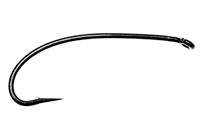
SL6 Black Spey Hooks
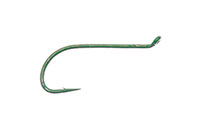
DU3 Limerick Spinner Hooks
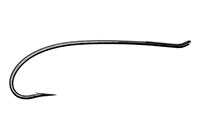
SL4 Single Bartleet Hooks
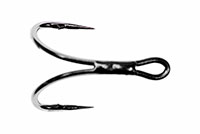
XD1 Tube Fly Double Hooks
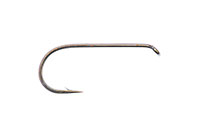
DD2 Flat Perfect Hooks
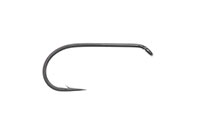
DD1 Black Terrestrial Hooks
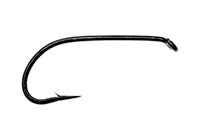
TD4 Old Limerick Wet Hooks
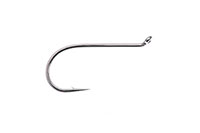
DU1 Silver May Hooks
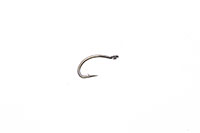
MU1 Flat Midge Hooks
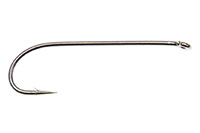
LD3 Long Limerick Hooks
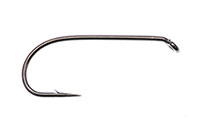
TD2 Summer Sproat Hooks
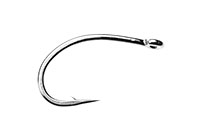
XS1 Tube Single Silver Hooks
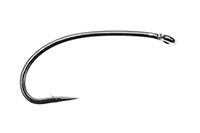
TD6 Siver Sedge Hooks

SL5 Black Spey Hooks

DU3 Limerick Spinner Hooks
- TROPHY CLUB
- FLY SHOW
- EXHIBITION
- MASTERS`
- FLY DRESSING CONTEST Archives
- TRAVELLER Archives
- TACKLE IMPRESSIONS Archives
- ANGLERS` PHOTO GALLERY Archives
- ----------------------------------------------
- トロフィークラブ
- フライショー
- エキシビション
- マスターズ
- フライドレッシング・コンテスト・アーカイヴ
- トラヴェラー・アーカイヴ
- タックル・インプレッション・アーカイヴ
- アングラーズ・フォトギャラリー・アーカイヴ
株式会社サワダ 185-0021 東京都国分寺市南町3-13-4
SAWADA'S INC. 3-13-4 Minamicho, Kokubunji, Tokyo 185-0021, Japan
写真・ドキュメントの無断転載を禁じます。
All the images and documents found on this site are owned by Ken Sawada and may not be used without permission.
But, link to this site is FREE.
Copyright © 2000 - 2025 SAWADA'S INC.. All rights reserved.
SAWADA'S INC. 3-13-4 Minamicho, Kokubunji, Tokyo 185-0021, Japan
写真・ドキュメントの無断転載を禁じます。
All the images and documents found on this site are owned by Ken Sawada and may not be used without permission.
But, link to this site is FREE.
Copyright © 2000 - 2025 SAWADA'S INC.. All rights reserved.
